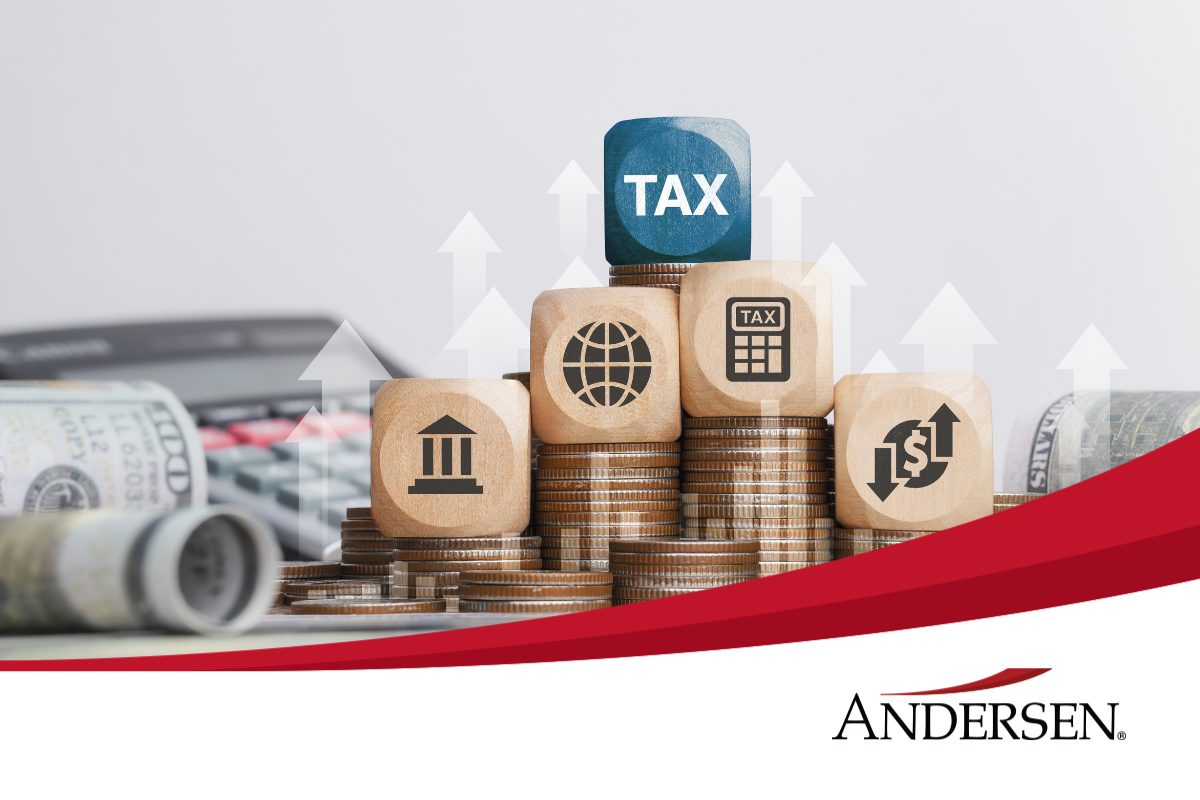Highlights of some of the fiscal measures announced in the Update on Québec’s Economic and Financial Situation and other measures

Table of contents
Overview.
Reduction of the Québec Pension Plan (QPP) Base Contribution Rate.
Reduction in Québec Parental Insurance Plan (QPIP) Premiums.
Temporary Health Services Fund (HSF) Contribution Holiday for certain sectors.
Harmonization with the 2025 Federal Budget.
Extension of the Refundable Tax Credit for Gaspésie and Maritime Regions.
Extension of the Income-Averaging Mechanism for Certified Forest Producers.
Adjustment to the Refundable Tax Credit Relating to Mining and Other Resources.
Adjustment to Exemptions under the Public Prescription Drug Insurance Plan.
Overview
On November 25, 2025, the Ministère des Finances du Québec published the Information Bulletin 2025-8, detailing fiscal measures announced in the Update on Québec’s Economic and Financial Situation and other measures. These initiatives aim to encourage Québec’s competitiveness, relieve financial pressure on workers and employers, and harmonize provincial taxation with recent federal developments
Reduction of the Québec Pension Plan (QPP) Base Contribution Rate
The Québec Pension Plan (QPP) is a mandatory public program that provides income to workers in the event of retirement, disability, or death. It is funded through contributions of employees, employers and self-income workers, calculated as a percentage of the workers’ pensionable earnings minus the annual basic exemption of $3,500.
For 2025, the QPP base contribution rate was 10.8% (5.4% paid by employees and 5.4% by employers). According to section 44.1 of the Act respecting the Québec Pension Plan, this rate automatically remains the same each year unless a new actuarial analysis from Retraite Québec shows that the plan’s long-term required rate (the “steady-state rate”) is higher by at least 0.1% point.
In November 2025, Retraite Québec published an actuarial report showing a steady-state rate of 10.47%, which is lower than the current 10.8%. This means that the QPP fund is performing better than expected.
To allow workers and employers to benefit from the situation, the government announced that it will temporally suspend the automatic rule for the year 2026 and reduce the base contribution rate by 0.2% point, setting it at 10.6%. Employees and employers will each contribute 5.3%, while self-employed workers will contribute 10.6%.
This reduction means that workers will have more money in their pockets, and employers will have slightly lower payroll costs. As an example, an employee earning $60,000 of pensionable earnings in 2026 will pay $56.50 less in QPP contributions than in 2025, while the employer saves the same amount. For a company of 250 employees with the same earnings, this represents about $14,000 in annual savings that can be reallocated elsewhere.
Reduction in Québec Parental Insurance Plan (QPIP) Premiums
The Québec Parental Insurance Plan (QPIP) provides income replacement for workers who take maternity, paternity, parental, or adoption leave by allowing parents to maintain part of their income. The plan is funded by premiums paid by employees, employers, and self-employed workers.
On September 10, 2025, the government had approved an 8% reduction in premium rates for the year 2026. However, new financial projections showed that the plan would continue to generate surpluses even after the rate reduction previously announced. Therefore, the government decided to give back more to contributors by expanding the reduction to 13% of the 2025 premium rates.
Starting January 1, 2026, the new QPIP premium rates will be:
- 0.430% for employees
- 0.602% for employers
- 0.764% for self-employed workers
This replaces the 2025 rates of 0.494%, 0.692%, and 0.878% respectively.
Temporary Health Services Fund (HSF) Contribution Holiday for certain sectors
The Health Services Fund is a payroll-based contribution that employers in Québec normally pay to ensure that everyone helps finance Québec’s health services. It is calculated as a percentage of the total wages paid to employees. In most cases, the current rate is 4.26% of an employer’s total payroll, although small or medium-sized businesses may qualify for reduced rates.
Rules applicable to the new temporary HSF contribution holiday
In response to current economic challenges faced by the agriculture, forestry, and fishing sectors, the government announced a temporary contribution holiday for the years 2026 and 2027. This means that eligible employers in these industries will not have to pay any HSF contributions during that period.
To qualify, a business will have to be a specified employer for the year with at least 50% of its payroll attributable to related activities in one of the following sectors, as defined by the North American Industry Classification System (NAICS):
- Crop production (code 111)
- Animal production and aquaculture (code 112)
- Forestry and logging (code 113)
- Fishing (code 1141)
- Sawmills (code 321111)
- Pulp mills (code 32211)
These are the industries most affected by the imposition of tariffs and the recent federal withdrawal of the carbon tax on April 1, 2025.
Temporary HSF contribution rules for individuals
An individual who resides in Québec at the end of the year also has to pay an HSF contribution if their total annual income exceeds a certain threshold. For 2026, this threshold is $18,500. The contribution amount is calculated progressively, increasing with income up to a maximum limit of $1,000:
- If a person’s total income for 2026 is $64,355 or less, they will pay the lesser of $150 or 1% of the amount by which their income exceeds $18,500.
- If their income is above $64,355, they will pay the lesser of $1,000 or the sum of $150 plus 1% of the income exceeding $64,355.
Certain types of income, such as most employment income and government benefits like Old Age Security pensions or Guaranteed Income Supplements, are excluded from the calculation base.
To support people working in agriculture, forestry, or fishing, the government announced that it will allow individuals with business income from these sectors to deduct their net income from these activities when calculating their HSF contribution for 2026 and 2027.
Harmonization with the 2025 Federal Budget
Tax measures harmonized
Following the federal budget presented on November 4, 2025[1], Québec confirmed that it will harmonize its tax legislation with several of the new federal measures. These include:
- Rules on qualified investments in registered plans.
- Immediate deduction for new manufacturing and processing buildings, allowing companies to recover costs faster.
- Rules on patronage dividends paid by agricultural cooperatives.
- Adjustments to Canadian Exploration Expense eligible activities.
- Updated transfer pricing standards.
- Investment income derived from assets supporting Canadian insurance risks.
In addition, the federal government decided to cancel the planned increase in the capital gains inclusion rate from 50% to 66.67% and to abolish the Canadian Entrepreneur Incentive, a proposed federal program that would have reduced tax rates on capital gains for small business owners. To ensure that the tax treatment of investment and business income in Québec remains consistent with the rest of Canada, Québec announced that it will harmonize with these federal changes.
These measures will take effect regarding the Québec tax system on the same dates as their federal counterparts.
Tax measures not harmonized
However, Québec will not adopt certain other federal initiatives that do not align with its existing programs or because the Québec tax system does not contain similar provisions, etc. Such measures are as follows:
- The tax credit for personal support workers.
- Automatic federal benefits for low-income individuals.
- The top-up tax credit for specific federal transfers.
- The home accessibility tax credit.
- The Scientific Research and Experimental Development (SR&ED) investment tax credit, since Québec already has its own provincial measures.
- The critical mineral exploration tax credit.
- The clean technology manufacturing investment tax credit.
- The carbon capture, utilization, and storage investment tax credit.
- The clean electricity investment tax credit and the Canada Growth Fund.
- Transfer pricing penalties and secondary adjustment rules, since Québec applies its own administrative framework.
Extension of the Refundable Tax Credit for Gaspésie and Maritime Regions
The refundable tax credit for Gaspésie and certain maritime regions of Québec was introduced on November 17, 2000, to encourage job creation and economic activity by providing a tax refund to businesses that pay salaries in specific sectors, such as marine biotechnology, wind power, manufacturing, tourism, and marine products processing.
To qualify, a business must, among other things, operate in one of the designated areas, including Gaspésie–Îles-de-la-Madeleine, Côte-Nord, Bas-Saint-Laurent, or certain nearby regional county municipalities (RCMs), and obtain an initial certificate from Investissement Québec certifying that it will contribute to the creation of at least three full-time jobs in one of its establishments located in a designated area within a reasonable period of time.
The credit is calculated as a percentage of the salaries paid to eligible employees, up to an annual limit of $83,333 per employee. The rate varies by sector:
- 30% for marine biotechnology, mariculture, and tourism activities (maximum of $25,000 per employee, per year).
- 15% for wind power, manufacturing, peat or slate processing, and marine products processing (maximum of $12,500 per employee, per year).
Originally, the program was supposed to end on December 31, 2025, but the government has decided to extend it until December 31, 2030, meaning that businesses can continue benefiting from this incentive for another five years.
The measure also expands the eligible territory for the marine products processing sector to include three new RCMs: La Matapédia, La Mitis, and Rimouski-Neigette.
Extension of the Income-Averaging Mechanism for Certified Forest Producers
The income-averaging mechanism for certified forest producers was introduced on a temporary basis in March 2016[2] to allow eligible taxpayers to defer through an income-averaging mechanism a portion of income generated by non-retail sales of timber produced in a private forest. It was introduced to help forest producers who do not earn income evenly from year to year, as all that income would be taxed in the same year it is earned, which could result in taxation at a higher tax bracket.
Currently, eligible individuals or corporations can defer tax on up to 85% of $200,000 of their annual income from non-retail timber sales, if the timber comes from a certified private forest and is sold to a purchaser in Québec. The deferred amount is then gradually added back to taxable income over a period of up to 10 years.
Due to challenges faced by the sector, including market fluctuations and export tariffs, the Québec government announced that this measure will be extended for two additional years, applying to income earned in a fiscal year ending before January 1, 2028.
Adjustment to the Refundable Tax Credit Relating to Mining and Other Resources
The Tax credit relating to resources was introduced on March 29, 2001, as a refundable tax credit offer to businesses that invest in the exploration and development of natural resources. The credit rate is between 12% and 45% depending on the type of resource and the business status.
In its 2025 budget published in March, Québec introduced a measure allowing a company to claim the credit on up to $100 million of eligible expenses over a five-year period. This is called the cumulative eligible expense limit. Once a company reaches that limit, additional expenses no longer qualify for the credit during that period.
However, companies operating in Québec’s Far North, defined as the territory located in Québec north of the 55th degree of north latitude, face higher exploration and development costs. To reflect the reality of these companies and to encourage investment in critical and strategic minerals[3], the government decided to adjust the way the cumulative eligible expense limit is calculated.
Applicable for a taxation year beginning after March 25, 2025, only 50% of expenses related to critical or strategic minerals incurred in Québec’s Far North will be considered in the $100 million limit.
Adjustment to Exemptions under the Public Prescription Drug Insurance Plan
The Public Prescription Drug Insurance Plan (PPDIP) ensures that all Quebecers have access to the medications they need, whether they are covered by a private group plan or by the public plan administered by the Régie de l’assurance maladie du Québec (RAMQ).
Adults who are insured under the public plan are required to pay an annual premium up to $755 based on their income to help finance the cost of drugs covered by the plan.
However, to ensure fairness and equality, each household benefits from an income exemption amount. Only income above this exemption is used to calculate the premium. This means that the lower a household’s income, the less it pays, and below a certain income level, no premium is due at all.
Each year, these exemption amounts are adjusted to reflect changes in the cost of living and to protect families’ purchasing power. For 2025, the updated exemptions are as follows:
| Household Composition | Exemption |
| 1 adult, no children | $19,890 |
| 1 adult, 1 child | $32,240 |
| 1 adult, 2 or more children | $36,460 |
| 2 adults, no children | $32,240 |
| 2 adults, 1 child | $36,460 |
| 2 adults, 2 or more children | $40,360 |
The premium is calculated using two separate rates, which are as follows for 2025:
- The first contribution rate applies to the first $5,000 of income above the exemption: 7.84% for a single person and 3.93% for a couple.
- The second contribution rate applies to any income exceeding $5,000: 11.76% for a single person and 5.89% for a couple.
[1] Please refer to the article on Budget 2025 for more details on federal tax measures introduced : https://ca.andersen.com/blog/federal-budget-2025-a-roadmap-to-sustainable-economic-growth/.
[2] In the March 2020 budget, it was announced that the measures would be extended by five years and the tax carry-over period increased from seven to ten years.
[3] Critical minerals include antimony, bismuth, cadmium, cesium, copper, tin, gallium, indium, tellurium, and zinc. Strategic minerals include cobalt, rare earth elements, platinum group elements, natural graphite, lithium, magnesium, nickel, niobium, scandium, tantalum, titanium, and vanadium.
CONTACT OUR TEAM OF EXPERTS
This article was prepared by the individuals listed below. For further information on the above, we invite you to please reach out Danny Guérin of Andersen Inc.
 | Danny Guérin, CPA, L.L.M.Fisc. Partner, Andersen Montreal |
 | Omar Yassine, CPA, LL.M. Fisc. Senior Manager |
 | Justine Lambert, Senior Tax Consultant |